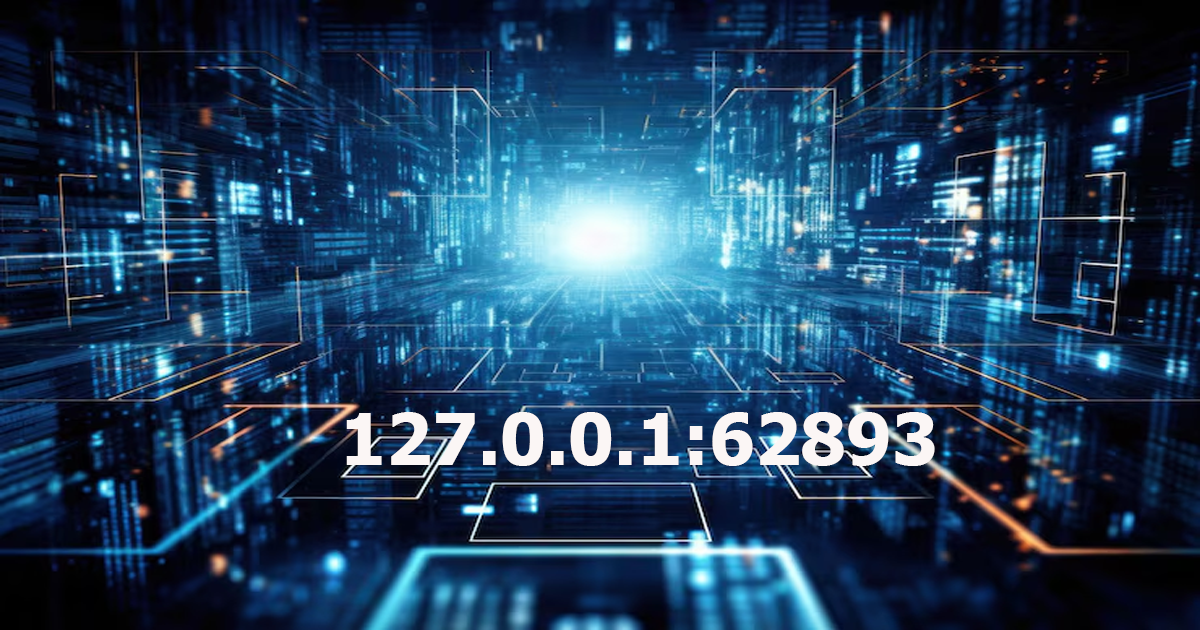Introduction
In the realm of networking and digital infrastructure, certain terms and configurations hold significant importance. One such enigmatic combination is “127.0.0.1:62893.” This article aims to unravel the mystery behind this address, exploring its significance, applications, and implications in the digital landscape.
Understanding IP Addresses
What are IP Addresses?
IP (Internet Protocol) addresses are numerical labels assigned to devices participating in a computer network. They serve as unique identifiers, allowing devices to communicate with each other within a network or across the internet.
Types of IP Addresses
IP addresses come in two main types: IPv4 and IPv6. IPv4, the fourth version of the Internet Protocol, uses a 32-bit address scheme, represented in decimal format (e.g., 127.0.0.1). IPv6, on the other hand, employs a 128-bit address scheme, accommodating a vastly larger number of addresses.
Demystifying 127.0.0.1:62893
Understanding the Structure
The IP address “127.0.0.1” is a special-purpose address commonly referred to as “localhost.” It points to the loopback interface of a device, allowing it to communicate with itself. The addition of “:62893” denotes a specific port number associated with this address.
Significance of Port 62893
Ports in networking serve as endpoints for communication. Each port is assigned a unique number, enabling multiple services to operate simultaneously on a single device. Port 62893, while not a well-known or standardized port, may be used by certain applications or services for internal communication or testing purposes.
Exploring Localhost: 127.0.0.1
What is Localhost?
Localhost, represented by the IP address 127.0.0.1, is a fundamental concept in networking and web development. It allows a device to refer to itself, enabling the testing and development of applications without external network access.
Practical Usage
Developers often utilize localhost during the development phase of software or websites. By hosting applications locally, developers can test functionality, debug code, and make improvements before deploying them to a live environment.
Applications and Uses of 127.0.0.1:62893
Testing Environments
The combination of 127.0.0.1 and port 62893 can be leveraged to create isolated testing environments. Developers may use this configuration to simulate network interactions, assess application performance, or conduct security assessments.
Debugging Tools
Certain debugging tools or software frameworks may utilize port 62893 for internal communication or diagnostic purposes. This allows developers to analyze network traffic, identify issues, and troubleshoot problems efficiently.
Security Implications
Potential Risks
While localhost and port 62893 are primarily used for internal purposes, improper configuration or exploitation of vulnerabilities could pose security risks. Malicious actors may attempt to exploit open ports or misconfigured services for unauthorized access or data breaches.
Best Practices
To mitigate security risks, it is essential to follow best practices for network configuration and access control. This includes regularly updating software, implementing firewalls, and restricting access to sensitive services.
Future Prospects and Developments
Evolving Technologies
As technology continues to advance, the significance of localhost and port 62893 may evolve. New applications, protocols, or development methodologies could emerge, reshaping how these concepts are utilized in the digital landscape.
Enhanced Security Measures
With cybersecurity becoming an increasingly prominent concern, future developments may focus on enhancing the security of localhost and associated ports. This could involve the implementation of stronger encryption protocols, improved access controls, and proactive threat detection mechanisms.
Conclusion
In conclusion, the enigmatic combination of 127.0.0.1:62893 holds intrinsic significance in the realm of networking and digital development. Understanding its structure, applications, and implications is crucial for developers, network administrators, and cybersecurity professionals alike. By demystifying this address, we gain insight into the intricacies of digital communication and pave the way for future innovations.
Keep Reading:





